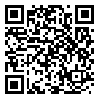Volume 1, Issue 4 (2012)
JCP 2012, 1(4): 337-347 |
Back to browse issues page
Raana Roohani1  , Masood Soltani Najafabadi2
, Masood Soltani Najafabadi2  , Seyed Mehdi Alavi3
, Seyed Mehdi Alavi3  , Naser Farrokhi4
, Naser Farrokhi4  , Masoud Shams-Bakhsh
, Masoud Shams-Bakhsh  5
5
 , Masood Soltani Najafabadi2
, Masood Soltani Najafabadi2  , Seyed Mehdi Alavi3
, Seyed Mehdi Alavi3  , Naser Farrokhi4
, Naser Farrokhi4  , Masoud Shams-Bakhsh
, Masoud Shams-Bakhsh  5
5
1- Department of Plant Biotechnology, National Institute for Genetic Engineering and Biotechnology (NIGEB), P. O. Box: 14155-6343, Tehran, Iran
2- Oil Seeds Research Department, Seed and Plant Improvement Institute (SPII), Karaj, Iran
3- Dept. of Plant Biotechnology, National Institute for Genetic Engineering and Biotechnology (NIGEB)
4- Department of Agronomy and Plant Breeding, Faculty of Agricultural Engineering, Shahrood University of Technology, P. O. Box: 361999516, Shahrood, Iran
5- Plant Pathology Dept., Faculty of Agriculture, Tarbiat Modares University (T. M. U.), Tehran-Iran
2- Oil Seeds Research Department, Seed and Plant Improvement Institute (SPII), Karaj, Iran
3- Dept. of Plant Biotechnology, National Institute for Genetic Engineering and Biotechnology (NIGEB)
4- Department of Agronomy and Plant Breeding, Faculty of Agricultural Engineering, Shahrood University of Technology, P. O. Box: 361999516, Shahrood, Iran
5- Plant Pathology Dept., Faculty of Agriculture, Tarbiat Modares University (T. M. U.), Tehran-Iran
Abstract: (6619 Views)
Asiatic citrus canker is a devastating disease resulting in drastic economic losses in citriculture worldwide. Amongst three different types of the disease, i.e. A, A* and Aw, the A* type is genetically less known. In order to comprehend the behavior of the Asiatic citrus canker A*-type strain (Xanthomonas citri subsp. citri) in the vicinity of the host cells, a targeted semi-quantitative transcript analysis approach via RT-PCR was carried out. A subset of sixteen genes, as representative of different steps involved in phytopathogencity, was analyzed on the culture medium (as uninduced) and compared with the subset isolated from the infected Mexican lime (Citrus auarntifolia L.) plants (as induced). The results showed that certain genes were up-regulated in induced condition, suggesting a putative role in bacteria-host interaction. Furthermore, the transcripts in induced condition could be classified into constitutive, early- and late-responsive genes, demonstrating their functional relevance during the host-pathogen interaction.
Received: 2012/05/12 | Accepted: 2012/11/28 | Published: 2012/12/8
| Rights and permissions | |
 |
This work is licensed under a Creative Commons Attribution-NonCommercial 4.0 International License. |


